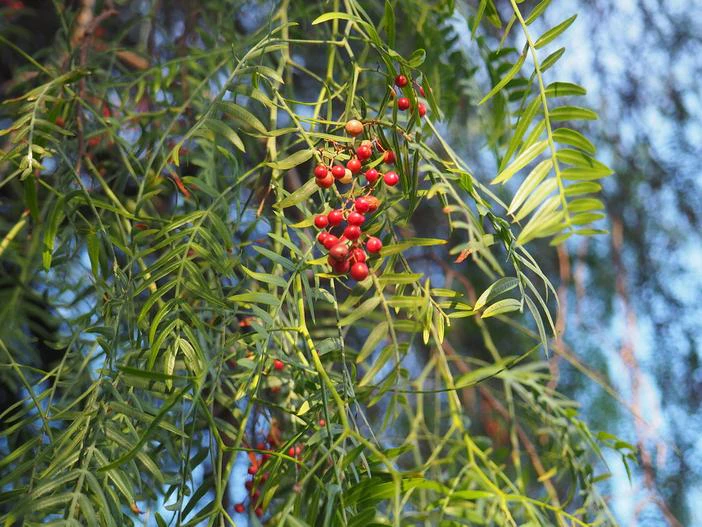Peruvian Pepper Tree
(Schinus molle)
Peruvian Pepper Tree (Schinus molle)
/
/

Teresa Grau Ros
CC BY-SA 2.0
































































































Estimated Native Range
Climate Requirements for Morgantown, West Virginia
| This Plant | Your Site | Plant Suitability for Your Location | ||
|---|---|---|---|---|
| • Precipitation | 0" - 118" | 42" | Aquatic | Aquatic |
| • High Temp. | 54°F - 112°F | 84°F | Your summer temperatures are normal for this plant. | Excellent |
| • Low Temp. | 22°F - 69°F | 21°F | Your winter temperatures may be too cold for this plant | Too cold |
Summary
The Peruvian Pepper Tree is valued for its shade, ornamental berries, and weeping form. It is used in urban plantings, as a shade tree, and in large gardens. It is drought-tolerant, requiring low amounts of water once established, and thrives in well-drained soils under full sun conditions. Despite its beauty, it has fallen out of favor in some regions due to its association with black scale, a pest that threatens citrus production. Additionally, its seeds, which germinate readily, can make it invasive in non-native areas, such as Southern California and New Zealand, where it can outcompete local flora. Gardeners should check local regulations before planting to prevent ecological disruptions.CC BY-SA 4.0
Plant Description
- Plant Type: Tree
- Height: 35-45 feet
- Width: 25-45 feet
- Growth Rate: Rapid
- Flower Color: N/A
- Flowering Season: Fall
- Leaf Retention: Evergreen
Growth Requirements
- Sun: Full Sun
- Water: Low
- Drainage: Fast
Common Uses
Deer Resistant, Edible*Disclaimer: Easyscape's listed plant edibility is for informational use. Always verify the safety and proper identification of any plant before consumption., Fire Resistant, Low Maintenance, Rabbit Resistant
Natural Habitat
Arid zones in the Andean deserts of Peru and dry forests of South America
Other Names
Common Names: American Pepper, California Pepper Tree, Peppercorn Tree, Peruvian-Mastictree, Peppertree, Pfefferbaum, Aguaribai, Pimientero Falso, Pirul, Molle
Scientific Names: Schinus molle, Schinus molle var. molle, Schinus occidentalis, Duvaua velutina, Mauria schickendantzii, Schinus bituminosus, Schinus molle var. argentifolia, Schinus molle var. huigan, Schinus molle var. huyngan
GBIF Accepted Name: Schinus molle L.